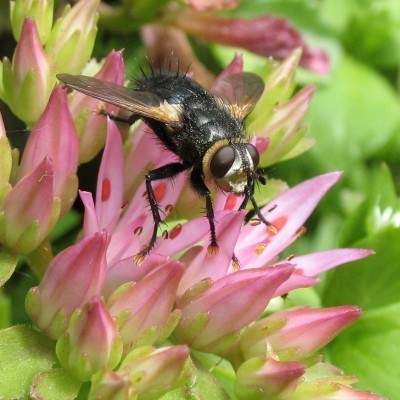






You’ve likely seen a tachinid fly or two buzzing around the garden, unaware of its importance. So what are tachinid flies and how are they important? Keep reading for more tachinid fly information.
A tachinid fly is a small flying insect that resembles a house fly. Most kinds are less than ½-inch in length. They usually have a few hairs sticking up and pointing backward and are gray or black in color.
Tachinid flies in gardens are very beneficial because they kill pests. In large part to their size, they don’t bother humans, but make things difficult for garden pests. Tachinidae can either lay eggs that a host will consume and later die, or adult flies will insert eggs directly into the host bodies. As the larva develops inside the host, it eventually kills the insect it is living inside. Each species has their own preferred method, but most choose caterpillars or beetles as hosts.
In addition to killing unwelcome garden pests, tachinid flies also help pollinate gardens. They can survive at higher elevations where bees cannot. Areas without bees can benefit greatly from this fly’s pollinating skills.
There are a number of tachinid fly species, which means it’s inevitable that at some point you will come across one in the garden. Here are a few:
What Is A Root Zone: Information On The Root Zone Of Plants
What Is Commercial Landscaping – Information On Commercial Landscape Design
What Is Parthenocarpy: Information And Examples Of Parthenocarpy
Biennial Plant Information: What Does Biennial Mean
What Are Facing Walls And Windows?
What Is A Hard Frost: Information On Plants Affected By Hard Frost
Copyright © www.100flowers.win Botanic Garden All Rights Reserved